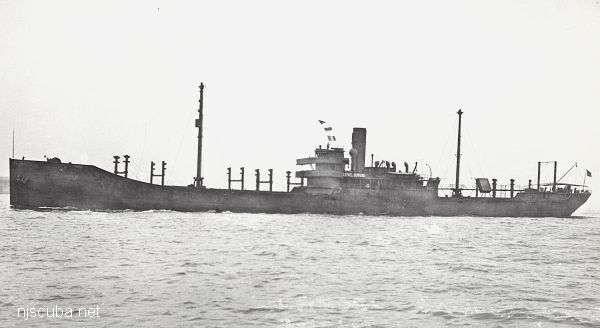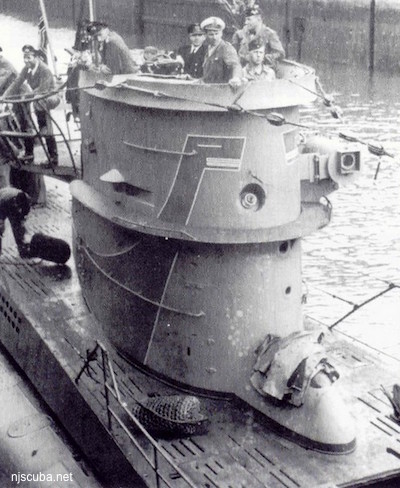Lemuel Burrows

- Type:
- shipwreck, collier, USA
- Built:
- 1917, New York Shipbuilding, Camden NJ USA, as Deepwater
- Specs:
- ( 437 x 63 ft ) 7610 gross tons, 34 crew
- Sunk:
- Saturday March 14, 1942
torpedoed by U-404 - 20 casualties - Depth:
- 80 ft
The Lemuel Burrows was torn apart by three torpedoes*, and subsequently, wire dragged twice. Today she sits in 80 ft of water on a sandy bottom. She is quite broken up, and a pretty good lobster wreck, still occasionally giving up some nice brass artifacts as well. Sometimes called "The Collier", she is dived often. Visibility is typical for the area, averaging 10-20 ft. Newer divers should heed the many overhangs, which could bring about an inadvertent penetration.
The U-404 sank the Tolten the day before.
* Waste three torpedoes on an old collier? The U-boat skipper was probably just trying to get rid of his "fish" so he could go home.

Completed in October 1917 as Deepwater for US Shipping Board (USSB). 1925 renamed Lemuel Burrows for Mystic SS Co, Boston MA.
At 07:58 hours on 14 March 1942, the unescorted and unarmed Lemuel Burrows (Master Grover Dale Clark) was torpedoed by U-404 about five miles south-southwest of the Brigantine Gas Buoy off Atlantic City after spotting the silhouette of the collier against the bright lights of the city. The U-boat had earlier missed with two torpedoes before hitting with the third on the starboard side between the #2 and #3 holds, followed by another torpedo at 08:15 hours on the port side amidships.
Most of the eight officers and 26 crewmen abandoned ship in two lifeboats, just before the ship was hit at 08.28 hours by a coup de grâce on the starboard quarter, causing the ship to lift and then sink, swamping the nearby lifeboats. All survivors were thrown into the icy water. Only eight men managed to cling to the overturned boat, but two eventually slipped into the water and drowned, while other survivors swam to two rafts, which had floated free. The U-boat surfaced and questioned the survivors before leaving the area.
After drifting for six hours, eight survivors were picked up by the American steam merchant Sewalls Point and seven others by a boat from the American steam merchant James Elwood Jones. Four officers and 16 crewmen were lost. All survivors were landed at New York, where one survivor died in the Marine Hospital at Staten Island.
Norfolk, Virginia - New York - Boston, Massachusetts
Cargo 12.450 tons of coal

LAWRENCE E SULLIVAN:
November 20, 2023 at 6:07 pm
My great-Uncle Lawrence T. Sullivan was 3rd Mate the night she was sunk. I was named for him when I was born. I am making a shadow box for him for the family is it possible to get a small piece of the ship during a dive? I know the ship was "Cable dragged" after WW2.
Respectfully
Lawrence E. Sullivan,
Major USAF Ret.
David Tesk:
November 12, 2023 at 6:11 pm
My grandfather, John Leonard, commanded this ship during the 1930s. He was not part of the ship's company when she was sunk.